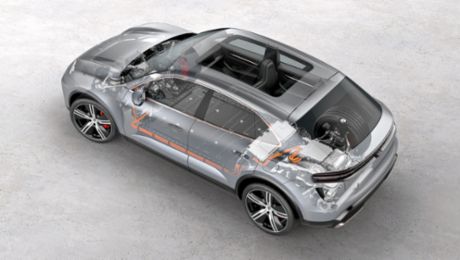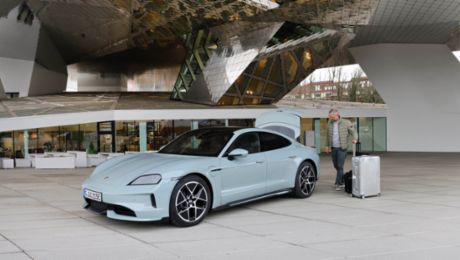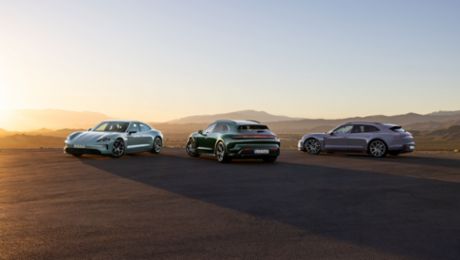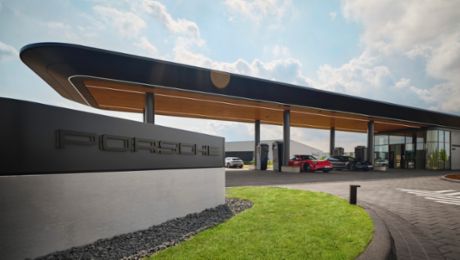Four DC fast-charging stations with a charging capacity of up to 400 kW and four AC charging points with 22 kW are available on the premises of the Porsche Centre. At the three existing lounge locations, the maximum charging capacity of the fast-charging stations has also been increased from 300 to 400 kW. In addition to this very high charging performance, the pleasant ambience and central handling of charging costs via the Porsche Charging Service are among the advantages of the Porsche Charging Lounges.
On the premises of the Porsche Centre Ingolstadt, which is directly located on the important north-south connection A9, all electric and plug-in hybrid models from the sports car manufacturer can now be charged using certified green electricity at the four high-performance chargers that are available around the clock at the Porsche Charging Lounge Ingolstadt. Drivers of the Taycan, which was extensively updated at the beginning of the year, benefit in particular from the increase of the DC charging capacity to 400 kW: the new models can be charged with up to 320 kW. With the increased charging stability, charging capacities of more than 300 kW are possible for up to five minutes. The new all-electric Macan can also be conveniently charged from 10 to 80 per cent in around 21 minutes.
To ensure a pleasant visit, the lounge area in Ingolstadt features modern sanitary facilities as well as a well-stocked selection of soft drinks and snacks. Analogue and digital media and high-performance WiFi are also available.
Convenient access to charging stations and lounge
At the new Porsche Charging Lounge Ingolstadt, Porsche drivers are currently able to use four of the brand‘s own fast-charging stations. More are planned. The Porsche Charging Lounges are displayed in the navigation system and in the My Porsche App. Billing after a charging stop is managed centrally via the Porsche Charging Service.
A Porsche ID is required to access the charging stations and the lounge area. This ID must be linked to the car. If the number plate is also linked to the Porsche ID, the barrier opens for you thanks to automatic number plate recognition. The car’s registration number can be stored conveniently in the My Porsche app. Alternatively, the customer can use their Porsche Charging Card or a QR code from the My Porsche app to easily access both the site and the lounge.
Nearly 700,000 charging points in 24 countries
Porsche’s own fast-charging stations complement the extensive investments that the sports car manufacturer has made in recent years to electrify its product portfolio and expand the charging network. The Porsche Charging Service enables access to the charging points of a range of providers all over the world. Currently, almost 700,000 charging points are connected in Europe in 24 countries. These include approximately 45,000 charging points with up to 150 kW and 30,000 points with an even higher charging capacity.
In addition, more than 845 Porsche dealer locations have made a tangible contribution to the expansion of the global charging infrastructure. So far, more than 1,500 high-performance charging points have been put into operation for customers at these sites worldwide. A special Charge Box is installed there, which enables a charging capacity of up to 320 kW even in places where grid connections are power-limited.




